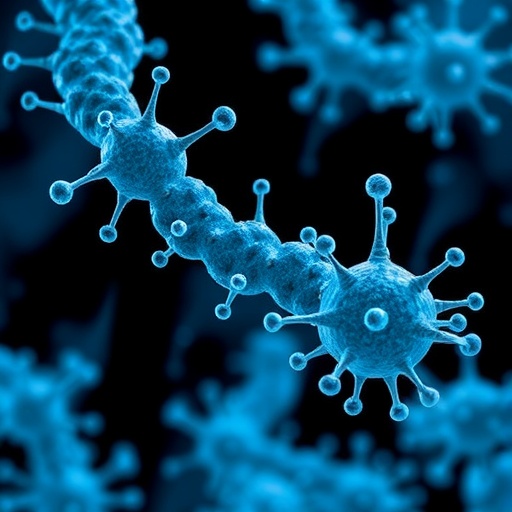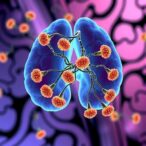
In a groundbreaking advancement at the intersection of chemical biology and protein engineering, researchers have unveiled a novel chemical strategy that allows for precise, single-atom modification of tyrosine residues in proteins. This transformative innovation leverages the unique reactivity of selenoxide compounds and introduces a water-resistant chalcogen and hydrogen bonding mechanism, paving the way for highly selective, stable, and biocompatible protein modifications under physiologically relevant conditions. Such an achievement addresses long-standing challenges in protein chemistry and opens the door to a myriad of applications spanning drug development, diagnostics, and synthetic biology.
Tyrosine, a relatively underexploited amino acid residue compared to cysteine and lysine, presents a compelling chemical target owing to its unique phenolic side chain. However, its modification has traditionally suffered from poor selectivity and harsh reaction conditions that compromise protein integrity and function. Existing methods typically rely on electrophilic or radical chemistry that lack specificity, leading to heterogeneous products and undesired cross-reactivity. The newly reported selenoxide-based approach circumvents these limitations by utilizing a uniquely balanced reactivity profile, which operates efficiently in aqueous media without sacrificing precision.
Central to this innovative method is the exploitation of the well-known yet underutilized properties of selenium chemistry. Selenoxides, the oxidized forms of organoselenium compounds, exhibit distinct reactivity patterns that distinguish them from classical sulfur or oxygen analogs. Researchers have harnessed this to create a reagent capable of selectively engaging the phenolic hydroxyl group of tyrosine residues through chalcogen bonding—a non-covalent interaction involving selenium that rivals hydrogen bonds in strength and directionality. This interaction synergistically enhances the specificity and stability of the covalent attachment.
.adsslot_9VCqORcdHn{width:728px !important;height:90px !important;}
@media(max-width:1199px){ .adsslot_9VCqORcdHn{width:468px !important;height:60px !important;}
}
@media(max-width:767px){ .adsslot_9VCqORcdHn{width:320px !important;height:50px !important;}
}
ADVERTISEMENT
One of the pivotal insights of the study lies in the discovery that the selenoxide reagent operates via a mechanism combining directional chalcogen bonding with conventional hydrogen bonding, which collectively stabilizes the transition state leading to the modified protein. Remarkably, this dual interaction system exhibits substantial resistance to hydrolysis and other water-induced side reactions that have plagued previous tyrosine modification strategies. As a result, the reaction proceeds cleanly in fully aqueous buffer systems at physiological pH, maintaining native protein structures throughout the process.
Proteins subjected to this modification protocol retained their functional and structural integrity, as demonstrated by comprehensive biochemical assays and high-resolution spectroscopic analyses. The researchers meticulously verified that the single-atom insertion at the tyrosine side chain did not perturb folding motifs or catalytic activity, an essential criterion for downstream biomedical applications. This degree of biocompatibility is unprecedented for tyrosine-targeted chemistries and suggests vast potential for site-specific labeling or therapeutic conjugation.
The chemical selectivity achieved by this selenoxide-mediated reaction stands out, especially in complex biological milieus where competing nucleophiles and reductants abound. The reagent exhibits minimal cross-reactivity with other amino acid residues, including cysteine, lysine, and histidine, which often complicate selective modification. This precision stems from the tailored electronic properties of the selenoxide moiety and its unique ability to form directional chalcogen bonds, a concept recently gaining momentum across supramolecular and medicinal chemistry.
Looking ahead, this work not only pioneers a novel chemical toolkit for protein functionalization but also expands our fundamental understanding of noncovalent interactions involving chalcogen elements in biological systems. The interplay between selenium’s electronic characteristics and hydrogen bonding offers new strategies to fine-tune reactivity and selectivity, potentially inspiring the design of next-generation bioconjugation agents, chemical probes, and enzyme inhibitors.
Importantly, the water resistance of this selenoxide-based chemistry addresses a critical bottleneck in in vivo applications. Many existing labeling reactions falter under physiological conditions due to hydrolytic degradation or competing nucleophiles present in cells and tissues. The robustness of this method in aqueous environments hints at future possibilities for live-cell labeling, site-specific drug delivery, and real-time monitoring of post-translational modifications with minimal off-target effects or cytotoxicity.
Furthermore, the molecular precision afforded by single-atom modifications offers exciting prospects for synthetic biology, where tailored mutations or chemical attachments can endow proteins with novel functionalities. The ability to selectively modify tyrosines without disrupting other residues provides a powerful handle to engineer enzyme active sites, modulate signaling pathways, or create hybrid protein-material constructs with unprecedented control.
This research also underscores the potential for selenium chemistry’s broader integration into biological contexts. Historically overshadowed by sulfur and oxygen analogs, selenium’s unique properties are now being appreciated as an enabling platform for sophisticated molecular engineering. The present work exemplifies how careful design and mechanistic understanding can unlock selenium’s potential in a biologically compatible fashion.
From a technological standpoint, the scalability and operational simplicity of the selenoxide reagent synthesis further bolster its appeal. Unlike more complicated or unstable bioconjugation reagents, the selenoxide compound can be prepared in high yield and is stable under storage, facilitating widespread adoption by laboratories focused on protein science, chemical biology, and pharmaceutical development.
The conceptual leap made here may also influence the design of other chalcogen-based reagents aimed at modifying different amino acid residues or protein motifs. By expanding the chalcogen bonding paradigm, chemists may discover new ways to harness subtle electronic interactions for high-fidelity molecular recognition and catalysis in biological environments.
This achievement is poised to impact multiple sectors, including therapeutic antibody conjugation, where precise modification of tyrosine residues can improve drug-to-antibody ratios and pharmacokinetic profiles. It also holds promise for the development of protein-based sensors or imaging agents that require site-specific attachment of fluorescent dyes or radioisotopes without compromising biomolecular structure.
In essence, the ability to install a single atom selectively onto tyrosine’s phenol group using this novel selenoxide chemistry stands as a testament to the power of combining fundamental inorganic chemistry insights with cutting-edge protein science. This breakthrough sets a new gold standard for precision protein modification in aqueous media, a feat once thought to be extraordinarily challenging.
The implications extend beyond merely creating a new chemical reaction; they reshape how scientists conceive enzyme engineering, post-translational modification mimics, and the broader interface between synthetic chemistry and biology. By enabling rapid, selective, and stable labeling in water, this method aligns perfectly with the growing demand for biocompatible and minimally invasive molecular tools.
Overall, the introduction of this water-resistant chalcogen and hydrogen bonding-enabled selenoxide reagent heralds a new era in protein modification technology. Its unique combination of selectivity, stability, ease of use, and compatibility with physiological conditions will likely stimulate a wave of innovation across chemical biology, therapeutic development, and synthetic protein design. As the scientific community continues to explore and expand these concepts, we can expect to see significant advances in both fundamental understanding and practical applications, dramatically enhancing our ability to manipulate and harness protein function at the atomic level.
Subject of Research: Single-atom protein modification of tyrosine residues using selenoxide-based chemistry enabled by water-resistant chalcogen and hydrogen bonding interactions.
Article Title: A selenoxide for single-atom protein modification of tyrosine residues enabled by water-resistant chalcogen and hydrogen bonding.
Article References:
Lin, S., Hirao, M., Hartmann, P. et al. A selenoxide for single-atom protein modification of tyrosine residues enabled by water-resistant chalcogen and hydrogen bonding.
Nat. Chem. (2025). https://doi.org/10.1038/s41557-025-01842-8
Image Credits: AI Generated
Tags: biocompatible chemical strategieschallenges in protein modificationdiagnostics in protein chemistrydrug development applicationsprecision in protein engineeringselective protein engineeringselenium-based chemical reactionsselenoxide chemistrysynthetic biology innovationstyrosine residue taggingunderutilized amino acids in biochemistrywater-resistant protein modifications



